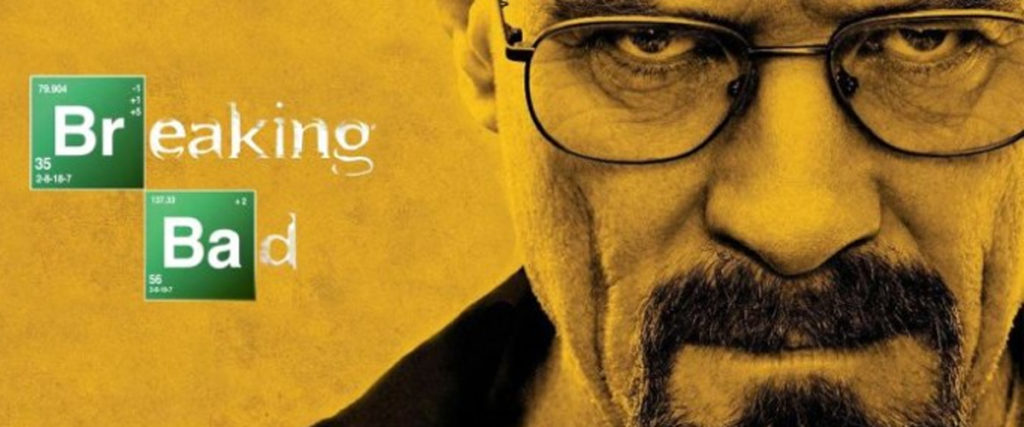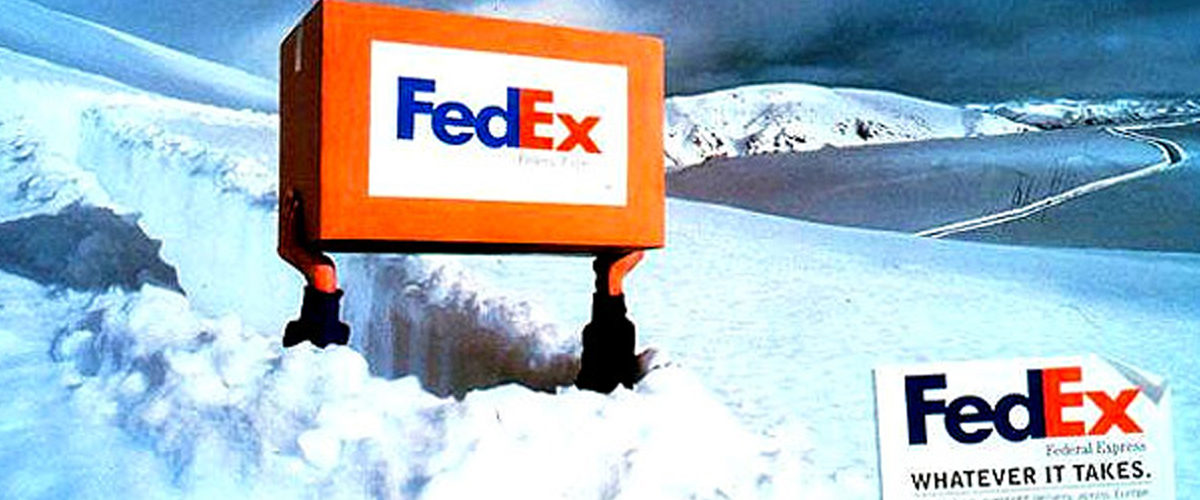
Breaking Bad, AMC’s hit crime drama we’ve all come to know, love, and mournfully wave goodbye too, ended two weeks ago in a (without giving too much away) justified, epic climax after five seasons of watching Walter White (A.K.A. Heisenberg) turn from sheepish high school chemistry teacher to roaring meth kingpin.For those of you who haven’t seen BrBa to its bitter-sweet end, I won’t go into details. What I will say of it is that I was thoroughly pleased with its conclusion, but not altogether satisfied, which is exactly what a great ending should be.Ending our presentations requires the same careful planning. The show’s infamously meticulous Executive Producer Vince Gilligan put a great amount of thought and effort into the show’s final chapter, and that’s because he knows what his audience is going to remember.There’s a famous saying in the sports world: “You’re only as good as your last game.” From this, we can take away that we’ll be remembered for our most recent victory and defeat. Our significance is who we are today. For a TV show–and for a presentation–the finale, or the closing, will be what is most remembered.Even if the first 90 percent of your presentation is brilliant, but the last 10 percent is a total wash, guess what they’ll remember from the presentation? The horrific ending. Fair? maybe not, but definitely the reality.So how to make sure your audience is left with the perfect ending? Here’s a few things Breaking Bad executed flawlessly that we can work into our presentations.Leave Your Audience Wanting MoreI previously stated that Breaking Bad’s ending was fantastic, yet not entirely satisfying. This is because, to me, the show ended at its peak, which I believe is precisely what Gillian planned. The series had a great story arc that resolved all issues, but we all still wanted the show to go on.You don’t want your audience counting the minutes until you stop talking by the time you’re on the later half of your presentation. In fact, you should end the presentation saying everything you need to say, but your audience wants to keep listening. This will not only have them leaving with a favorable impression of you, but it will keep you and your presentation on their minds, ultimately leading to your information being better retained.Don’t leave loose endsThere’s a big difference between a show ending at its peak and one that ends open-ended and often confusingly (I’m looking at you, Lost).
10 Words to Cut From Your Presentations

Thomas Jefferson famously wrote, “Never use two words when one will do.”
Dr. Seuss, Steve Jobs, Albert Einstein, and Bill Gates all had an underlying focus on simplicity in their work. Simple ideas by definition are easier to understand and are therefore more likely to be successful. Most presenters focus on shoving as much information possible in their PowerPoint presentations, but the fact of the matter is, the less you say, the more your audience will understand. That doesn’t mean cut parts out; it means simplify every part as much as possible. This process should be utilized for both the written text within the deck, and the words that you are saying. The best way to get started with simplification is to learn to avoid certain “fluff” words.Aim to make your writing and presenting more powerful, so here are 10 words you should start avoiding:
1. Got
Using “got” wastes valuable opportunities to use specificity and effectively describe your work process. Got is a highschooler’s word that serves no purpose in a professional PowerPoint presentation.
2. Just
The word “just” is a useless filler word (unless being used in the context of something being just or unjust) that elongates your writing for no reason and wastes times. Wasting time is the same as saying decreasing focus and interest from the audience.
3. Really
Using the word “really” is very common and almost seemingly natural within verbal conversations. It’s a type of verbal emphasis that doesn’t translate well into text. Despite its popularity in conversation, it’s unnecessary, and should, therefore, be cut
4. Then
“I talked to the customer then she yelled at me then I realized what I needed to change then I told my team.” You see how annoying and wasteful the word “then” can be? Cut it!
5. Maybe
The last characteristic you want to give off to your audience is uncertainty. When you use words like “maybe” and “perhaps,” uncertainty is exactly what you’re communicating. If you lack confidence in any aspect of your service or product, why should I be confident in it?
6. Um
When someone uses “um,” he or she either immediately shows three things: uncertainty, lack of confidence, and lack of professionalism. “Um” is worse than filler words because it not only shows that you are wasting time, but it shows you’re nervous. Cut it!
7. Literally
Regardless if something is true in a literal sense, you still don’t have to add the word “literally.” Only in an attempt to explain you aren’t joking when it seems you are, is it beneficial to use this word.
8. Amazing
This word is used to describe so many levels of quality that it is now virtually useless. Use more specific words to describe the great quality of whatever you’re talking about.
9. Things
Much like “stuff” “things” is vague and useless.
10. Stuff
“Stuff” is casual, vague, and consequently a waste of time. Description and specificity are powerful when used tacitly.All in all, I’m trying to help you cut the fillers, get rid of the “fluff”, and make your writing and presenting stronger. The best way to achieve that goal is to start with a tangible next step. That step should be to avoid these 10 words at any cost.
Why You Need Work With The Naked

While this title might sound provocative, it refers to the concept outlined in Garr Reynolds’ book The Naked Presenter, which emphasizes the importance of authenticity, simplicity, and connection when delivering presentations. “Naked” here means presenting in a raw, authentic, and honest manner—stripped of unnecessary embellishments or distractions. This approach can help you build a stronger connection with your audience and communicate more effectively.Here’s why working with “The Naked Presenter” approach can transform your presentations:
1. Focus on Connection, Not Perfection
When you focus too much on perfecting every slide, you risk losing the human connection that’s vital to engaging your audience. “Naked” presenting encourages you to embrace imperfections and focus on connecting with your listeners.Why It’s Important:
- Enhances Engagement: Audiences respond better when they feel a personal connection to the speaker.
- Builds Trust: Being authentic makes you more relatable, helping to establish trust with your audience.
How to Do It:
- Speak naturally and don’t worry about being flawless. Authenticity is more compelling than perfection.
- Use personal anecdotes or examples to make your presentation more relatable.
2. Simplify Your Slides
The Naked Presenter approach advocates for minimalist slides that focus on enhancing your message rather than distracting from it. Avoid slides cluttered with text or complicated visuals.Why It’s Important:
- Keeps the Focus on You: Overloading slides with text or visuals can divert the audience’s attention away from you, the presenter.
- Clarifies the Message: Simple slides help the audience grasp your main points without unnecessary distractions.
How to Do It:
- Limit each slide to one key idea, and use visuals sparingly.
- Use large, readable fonts and high-quality images to convey your message clearly.
3. Be Vulnerable and Genuine
Working with The Naked Presenter philosophy involves showing your authentic self, even if it means revealing some vulnerability. Audiences appreciate when presenters drop their defenses and communicate from the heart.Why It’s Important:
- Creates Emotional Impact: Vulnerability can make your message more powerful and resonate deeply with your audience.
- Enhances Memorability: Audiences are more likely to remember presentations where they felt an emotional connection to the speaker.
How to Do It:
- Share personal stories, challenges, or lessons learned to illustrate your points.
- Don’t be afraid to show your personality—whether it’s humor, passion, or humility.
4. Eliminate Unnecessary Details
A key aspect of The Naked Presenter approach is focusing on what really matters. You don’t need to overload your presentation with every piece of information. Instead, focus on the core message and the essential supporting details.Why It’s Important:
- Maintains Audience Interest: Too many details can overwhelm your audience and cause them to lose focus.
- Clarifies Your Message: By stripping away non-essential information, you highlight what truly matters.
How to Do It:
- Start by identifying your core message and build your presentation around it.
- Use data or examples sparingly and only when they directly support your main point.
5. Embrace Silence and Space
In presentations, silence can be as powerful as speech. The Naked Presenter approach encourages you to embrace moments of pause and use space effectively, both in your slides and in your speech.Why It’s Important:
- Allows for Reflection: Pausing allows your audience to absorb and reflect on what you’ve said.
- Creates Emphasis: A well-timed pause or minimalist slide can give more weight to your message.
How to Do It:
- Don’t be afraid to pause for a few seconds after making a key point—it gives your audience time to process the information.
- Use white space in your slides to direct attention to the most important elements.
Final Thoughts
Working with the principles of The Naked Presenter can help you create more meaningful, engaging, and authentic presentations. By focusing on simplicity, vulnerability, and connection, you’ll be better equipped to captivate your audience and leave a lasting impression. Remember, the most impactful presentations are often those that are honest, uncluttered, and direct.
What Professional Athletes Can Teach Us about Preparing for a Winning Presentation

There’s a saying in the sports world that 90 percent of performance is mental.
This isn’t to say that all the intense physical preparation, practice, and training for the big game won’t have a huge effect on an athlete’s performance, but none of that hard work will matter without being mentally prepared for the pressures of high-level competition.Similarly, while it’s obviously vital to practice, obtain the best professional PowerPoint possible and plan all aspects of your presentation carefully, to avoid stress and pressure affecting you at the moment of your presentation. If you’re not mentally prepared then that presentation you worked so hard to perfect might never come to fruition. Look at some of today’s top athletes, like Peyton Manning and Lebron James, prepare themselves physically and mentally before any big game and have this down to an exact science.
Visualize Success
There was a study conducted by Dr. Judd Blaslotto at the University of Chicago in which the subjects were divided into three groups. At the beginning of the study, he tested each group on how many free throws they could make.After this, he had the first group practice free throws every day for an hour, the second group just visualized making free throws successfully for an hour, and the third group didn’t do diddly squat.After 30 days, the groups were retested. The third group didn’t improve. The first group improved by 24 percent and the second—the ones who did nothing but sit around all day thinking about shooting free throws—they improved by 23 percent.Visualizing success is imperative to that success manifesting itself. If you are continually thinking about all the terrible things that could go wrong during a speech, this negative reinforcement may result in a poor performance. However, if you make it a point in your preparation to picture yourself giving a winning presentation, studies show that this will have a discernible positive impact.
Golfing and Grace Under Pressure
When pro female golfer Inbee Park won the U.S. Female Open earlier this summer, she credited her success to two things: her experience and her mental health coach.This reiterates the two-part recipe for success in both sports and presenting to an audience. Preparation, practice, and experience are the foundation for success, but mental toughness is the final ingredient to a winning presentation.Many golfers now use a mental coach to learn how to embrace anxiety before a tournament in order to use it to their advantage. The right amount of anxiety can heighten our awareness and sharpen our senses. The trick is to stay on top of your anxieties, controlling them rather than letting them control you.While obviously this post can’t do what a mental coach can, some important lessons a mental coach often provides are:-Don’t carry mistakes from the previous hole through the rest of the round. When giving a presentation, don’t let past flubs haunt you. View each presentation as a unique opportunity to prove yourself.-Deep breaths can go a long way. It will lower your heart rate and allow you to think clearly and rationally about the situation.-Enjoy yourself. When you’re having fun, you won’t be weighed down by the pressure of the situation. Realize that people just want to enjoy your speech and have fun with it.
Maintain a Positive Outlook
Psychology today analyzed endurance sports such as marathon running and found that a key part of enduring these grueling races is mental outlook. While there isn’t as much crossover between presentation and endurance sports, there is a good lesson to learn about maintaining a positive attitude in the face of unexpected challenges, which is important when things don’t go as planned during our presentations.”The key is how people respond to the stressful conditions,” writes psychologist Jim Taylor, Ph.D. “If you have two athletes of equal ability and one sees, for example, rain and wind as a threat that scares and intimidates them and the other as a challenge that they know they can overcome, the latter athlete will be more successful.”So if there’s a technology malfunction, an unruly crowd , or any of the unforeseeable flubs that tend to arise, remember to view them not as a death sentence to your presentation, but as another challenge to overcome and prove yourself with.
Check out our Webinar for ON24 :Teaching the Importance of Simplicity

SlideGenius Founder and CEO Rick Enrico spoke last Thursday on the importance of simplicity in presentation design as a part of ON24’s very first installment of its Webinar Academy.To view the webinar, titled, “Avoiding Information Overload: The Importance of Simplicity in Presentation Design,” do the quick, 1-minute registration here and view the entire webinar series created by ON24, a leading virtual communications company. Along with Rick’s, you’ll find several other Webinars that have a lot to teach about presenting in the digital age.While most presentations designed by SildeGenius are given in person, the attention ON24 is giving to Webinars is indicative of a growing trend toward Internet-based presenting and how this is expanding our scope of how we can reach an audience. By viewing our webinar, you’ll see that all the key elements of an effective PowerPoint presentation are still there, but coupled with it is the ability to reach millions of people at the click of a button by creating your presentation online.
Extreme Presenting: An Example from Ted Cruz

Presenting in high-stakes environments, whether it’s politics or business, demands a unique combination of clear communication, passion, and strategic use of visuals. One memorable example of extreme presenting is Senator Ted Cruz’s 2013 filibuster, which was both a political event and a presentation spectacle. While you may not agree with his politics, there are valuable lessons in how Cruz used visuals, metaphors, and passion to maintain engagement over an extended period.Here’s what we can learn from his extreme presenting style:
1. Use of Visual Metaphors to Drive Home the Message
During his marathon speech, Cruz famously referenced and read from Dr. Seuss’ Green Eggs and Ham. While it might seem odd in a political debate, this playful metaphor was effective in symbolizing his argument against government overreach, a key point of his stance on healthcare reform. The use of visual and narrative metaphors helped him break down a complex topic into something more relatable.What We Can Learn:
- Extend Metaphors to Explain Complex Ideas: By drawing on simple, well-known stories or images, you can make complex issues more accessible and memorable for your audience. Metaphors create a shared understanding, helping audiences connect emotionally with the material.
Example for Business Presentations: When explaining a challenging financial forecast, you might compare navigating the market to “sailing through a storm,” helping people visualize uncertainty and the importance of staying focused.
2. Energizing Presentation with Passion and Humor
Throughout his filibuster, Cruz maintained a steady energy level, interspersing his arguments with moments of humor and personal anecdotes. Whether reading children’s books or making light-hearted jokes, Cruz kept the audience engaged, even as his speech stretched for hours. His passion for the subject was undeniable, which helped hold viewers’ attention.What We Can Learn:
- Maintain Energy and Passion: An effective presenter conveys passion for their topic, which can be contagious for the audience. Your enthusiasm will help keep your listeners engaged, even when the topic is serious or the presentation is long.
- Use Humor Thoughtfully: Light moments and humor can break the tension and keep the audience focused, as long as it complements your message.
Example for Business Presentations: When discussing a difficult challenge, a touch of humor—such as referencing a well-known, humorous situation—can help keep the atmosphere light and the audience attentive.
3. Use of Long-Form Presenting
Cruz’s ability to sustain a speech for 21 hours offers a lesson in pacing and stamina. His extreme presentation style was a mixture of facts, personal anecdotes, humor, and a clear focus on his objective. This long-form presentation method requires exceptional preparation and an understanding of how to break content into digestible parts to maintain audience engagement.What We Can Learn:
- Break Up Content into Segments: Even in extended presentations, breaking the content into smaller, manageable segments helps maintain audience attention. Cruz used a variety of techniques, from storytelling to visuals, to divide his lengthy speech into smaller, engaging parts.
Example for Business Presentations: If you need to deliver a long presentation, structure it into sections with clear transitions. Add anecdotes or real-life examples between each section to create natural breaks and keep your audience engaged.
Final Thoughts
Ted Cruz’s filibuster stands out as an example of extreme presenting, demonstrating the importance of metaphors, energy, humor, and strategic pacing. Whether you’re giving a short talk or a long-form presentation, these techniques can help you connect with your audience, maintain engagement, and deliver your message effectively.
3 Secrets from the Most Trusted Brands Around

Which company would you say has the best customer service in the world?
For me, only big names come to mind. Amazon, Fedex, Starbucks, Apple, Target; all these companies are seen and valued as great empires that run the United States, and to some extent, the world. Customer service has become a major facet of how people judge businesses today. Within customer service, lies it’s core foundation, trust. When people trust a brand, they use it, recommend it, share it, and more importantly, like it.When we discuss branding, one of the simplest and most relevant examples would probably be corporate presentations. The way quality with which one presents their company to others is the level to which their branding valued. For that very reason, being able to understand and recreate the important aspects these trusted companies currently use will be invaluable to any executive.We decided to take a crack at it and analyze the consumer survey created by Entrepreneur and The Values Institute at DGWB, a California-based think tank, which explored this very issue. The results are an analysis of 5 of the top 10 most trusted brands.
Simple & Personal: Amazon
The tycoon online retailer of just about everything comes out on the top of our list. Amazon’s success doesn’t root from the millions of products is manages, the unlimited and 24/7 access its offers, the great quality search filter it holds, or the shockingly effective and satisfying customer service it is compromised of. Amazon is best the because of its superior purchase experience. People love things to be easy and to be treated well; two things Amazon does beautifully well.>Additionally Amazon is arguably best at fostering relationships with consumers by helping them make decisions through recommendations from other people. “People are able to choose items based on other consumer’s past purchases, user reviews and ratings and suggested complementary purchases. Consumers also have many options for forging a personal bond with the brand, including user profiles, reviews and ratings.”So if there is anything we should learn from Amazon, it is to make things easy and personal. This is especially true for your professional PowerPoint presentations. You must be able make things easy to understand while allowing your audience to relate to you in a variety of ways. Tell a story, show emotion, show an inspiring video, or just do something that will invoke emotion from your audience and consequently more sales for you.
Customer Appreciation & Accountability: Fedex
FedEx has designed and more importantly, maintained one of the strongest corporate identities around. In the aforementioned consumer survey the company “received its strongest ratings in ability, specifically for being able to achieve what it promises and for the efficiency of its operations.”Try to remember any of the recent Fedex commercial spots on TV. They all show a strong focus on recognizing that it’s not just about the logistics of moving boxes, but about an appreciation of what’s inside. The content, the story, the emotion, to a simple point, the meaning each box has. This is the main point. Fedex does a phenomenal job at showing their value for their customer and“To further deliver that message, FedEx engages with consumers through its personalized rewards program and by interacting on social media channels.” The company thinks of their customers as much more than just an order number or box, and they show that in their branding and marketing, and that is true customer appreciation.With regard to your corporate presentation, use the same idea. Highlight how you show customer appreciation and make clear that you hold yourself, and no one else accountable for your quality.
Be Product-Centric: Apple
Not many companies have the public and press waiting in line, for days, waiting breathlessly for each new product release. “The bottom line is whatever that new Apple product is, consumers trust that it will be smart and sleek and that it will improve the way they communicate, work or spend their leisure time. What’s more, they’ll enjoy the experience of making the purchase.”Even more, Apple is known to hire empathetic people, and not measure their sales associates on sales. This at first seems absurd; almost every other retail store in the world wants good salesmen and will create a competitive environment to weed out the weak. Apple knows that its product is so well liked, that it can sacrifice the competitive edge between its sales associates. The only factor that allows them to be so confident in their product, its that they put so much focus on it, and they make sure everyone knows that.
Wrapping up
In short, today’s most trustworthy brands have created relationships with consumers through experiences that trigger a visceral and amazingly effective response. Quoting the aforementioned consumer survey results analysis by branding consultant Jim Stengel, “We’re seeing more of an emphasis on brands building emotional relationships with consumers because it’s powerful and it works. When you do it, you have a much stronger affinity, a much stronger business, much stronger growth and much stronger results.”It doesn’t just come down to you making your have better customer appreciation, accountability, or product-centricty, it comes down to showing that your do these things. What easier way to show these things than through your next corporate, sales, or marketing presentation. Be transparent, be clear, and show your customers, partners, and the world how you do things, in return you might just be the next one on this list.READ MORE: Secrets of the 10 Most-Trusted Brands – Entrepreneur
9 Presentation Resources You Don’t Want to Miss

The most memorable presentation of my life
Once, while in the third grade, a classmate of mine, Julie, was supposed to give a presentation on a subject that I obviously no longer remember, but let’s just say was Apache Indians. She had built a huge, or what I thought at the time thought was a huge, Paper Maché project for her presentation.The project had dozens of little Indians, tiny teepees, plastic horses, even handfuls of real grass. When our teacher called her up to speak, she walked up front-and-center, with her project in hand, looked up to the class for about 10 seconds, and blew chunks all over her incredibly detailed project. Ironically, that was one of the most memorable presentations I’ve seen. Julie was afraid to present to us. Coincidentally, fear of public speaking actually incredibly common.While maybe blowing chunks isn’t always the consequence, it is definitely a nerve-racking experience. In fact, some experts estimate that as much as 75% of the population has some level of anxiety regarding public speaking. The best way to get over the fear is to be prepared. Preparing obviously consists of practicing a whole lot, but it also incorporates resourcefulness. Before one begins to practice, one must design an effective presentation to practice with. With that comes the need to know how to make effective presentations. For that reason, we at Slidegenius, have come up with a short list of 9 useful resources for anyone who may find themselves giving or creating a presentation.
1. Beyond Bullets
This site will help you use presentation software more effectively. Filled with stimulating content and useful information. The site highlights certain philosophies and strategies with regard to the way you use your software and apply it to presentations.
2. DesignSense
This site advertises itself as “graphic design training for businesspeople.” The content focuses on a series of design lessons the common-folk with no formal training in graphic design. The company claims that the training you receive on the site is equivalent to a 40-hour graphic design course. It is condensed into 12 hours of computer-based training and costs around $60.
3. Presentation Zen
This site is essentially Garr Reynold’s blog on issues related to presentation design, technique, and delivery. Reynolds provides examples of good and bad presentations.
4. Crystal Graphics
This is a great source for PowerPoint add-ins that enhance the basic program. Professional-like transitions, 3D Titles and custom templates are some of the more popular add-ins. The only caution Id give is that some of the effects require some intense hardware horsepower and may be costly.
5. KeynotePro
This source presents amazing Keynote themes for professionals.
6. PowerPoint ImageObjects
The site offers collections of great-quality symbols and shapes, metaphor objects, numbers, bullets, and other objects.
7. PowerPoint Templates Pro
Another collection of professionally produced PowerPoint templates.
8. iStockPhoto
Cheap and good-quality images.
9. Microsoft Clip Gallery Live
Microsoft’s free clipart site.If you can think of any other resources that I have missed, please comment to share your favorites.
References:
Fritscher, Lisa. “Glossophobia.” About.com.
4 Things to Avoid in Order to Gain Respect During a Presentation

Making a positive, memorable impression is an enormous aspect of professional presentations. However, when we’re up on stage–under the magnifying glass–we might not be cognizant of how the audience is perceiving us. Here are a few very common tendencies people tend to fall into without realizing, and ironically, these are often done as an attempt to be more likable and relatable.1. Don’t Make Jokes at the Expense of OthersThis is a very commonly used ploy to win over the majority of the crowd at the expense of its minority. However, anyone who’s respect you want will see through this. It’s a cheap trick you should not stoop down to. Humor is a great tool during a speech, but either make it constructive, or even better, make yourself the butt of the joke. As long as you’re not too harsh on yourself, this is a great way to be relatable to the audience.2. Don’t Dumb Yourself DownIf you’re attempting to come off as more colloquial or conversational, be careful not to take it too far. Sure, you don’t want to be rigid or robotic, but talking to an audience the way you talk to your friends on a Saturday night won’t score you any points.This is a fine line to balance. You may have an intensely technical background, and you might have to present on a complex topic that goes along the same lines. In this case, where you might have to actually simplify your ideas a great deal in order to relate them to your audience, it’s important to be very cautious aobut the tone you’re using. As we all know, nothing is quite so infuriating as being spoken to like a five year old. Keep in mind that you’re presenting to a room full of professional, of fully grown adults who deserve to be spoken to as such. Don’t dumb down. Simplify.3. Don’t show off with your vocabularyOn the contrary, don’t try to dazzle your audience with your faux-intellect by using as big of words as possible when showing your PowerPoint slides. Presenting is about communication and relating to your audience. Using unnecessary language might distract or confuse, and you’ll likely come off as obnoxious.4. Don’t Fidget NervouslyNo one wants to watch Woody Allen squirm nervously on stage while when they’re looking to gain meaningful information in a business setting. Most likely if you don’t think about your posture, body movements and posture, then they’re probably not working toward your advantage. Make sure your movements are slow, meaningful and deliberate. The confidence you’ll exude in doing so will go a long way.If you can’t tell what the overarching theme with all of this is, it’s that you should present yourself as well as possible, but don’t falsify your image because your audience will see right through it. Be yourself, but make sure you’re being the best version of yourself possible.
An Angel Investor’s Guide to Cracking the Mind of an Angel Investor

“I would like to introduce myself to you. I am an angel investor. You may not have met the likes of me. I play several different roles. I listen to your presentations, a challenger of your strategy, an investigator conducting due diligence, a negotiator over investment terms, and finally a check writer to fund your growth.”
Who better to advise on an angel investment pitch than an angel investor himself? Edward Harley, Angel Investor and member of the Keiretsu Forum lays out exactly what you need to do to become part of the “top 5% of all presenters.” Though his context lies in the world of investor pitches, his advice is true and useful for anybody presenting about any subject.Usually, you’ll have about 10 minutes to “pitch” your idea to an investor. Within those few minutes, you need to tell Harley’s seven stories successfully:
1. The ‘fundamental business logic’ story
This part of your presentation illustrates how you don’t just have an idea but a logical approach to making a business out of it. Great ideas are valuable but relatively useless without proper execution. It’s a great execution that changes the world. That is what investors, and really just audiences, want to understand from you: the steps you took or are taking to realize your idea. In other words, share your story.
2. The ‘total available market’ story
This section of your presentation is essentially the evidence you use to support your “fundamental business logic story.” You highlight the path your business will walk on and explain how wide the passageway is.
3 This is a $50m to $100m business’ story
Continuing on the ”evidence” of your business logic story, this presentation portion is meant to display a sense of value. It would be best if you made your audience understand that your business venture is credible and an enticing and convenient investment for them.
4. ‘The product can be differentiated’ story
Here, you’ll show why and how you are different and better than your competition. This is a key point. Your audience wants to know and identify your specialty. After all, it is that very specialty that people will remember you by. Harley says it that his “expectation is that [he] will hear about a solution that is significantly better for the customer than all their existing choices, by ‘significantly better’, [he] mean[s] 10X better.”
5. ‘The product/service can be sold’ story
This area of your presentation should come back to the past four sections. Here it would be best if you reaffirmed that your product or service is reliable and has the potential to lead to satisfying results.
6. ‘This management team can do it’ story
You’ve made your case for the product or service; now, you have to establish your credibility and that of your team as valuable, effective, and reliable workers.
7. ‘This is a good investment for the investor’ story
This presentation portion should summarize everything and reiterate the essential selling points. Here you are making the idea of an investment, sale, or whatever call-to-action concrete.At the end of all this, it is time to ask yourself through an investor’s mentality, “Could I, your listener, replay to another person the very basics of your venture and how your target customers will benefit from using your product?”If the answer is yes, then you have successfully increased your chances of realizing your presentation’s call to action.Harley sums it up best by saying, “If you can passionately tell me those 7 stories while building a rapport with me where I eventually become an investor, we can jump over obstacles together. In addition to being a source of funds, I am a member of a terrific network of successful colleagues who are willing to assist you in your entrepreneurial effort. Our knowledge is both deep and wide, crossing industries, technologies, markets, and distribution channels. Thus, I encourage you to make an upfront effort to tell me your story. We can be successful together!”
Reference:
- How Entrepreneurs can be Successful Presenters to Investors (PDF) – Edward P. Harley, Angel Investor, Keiretsu Forum Member